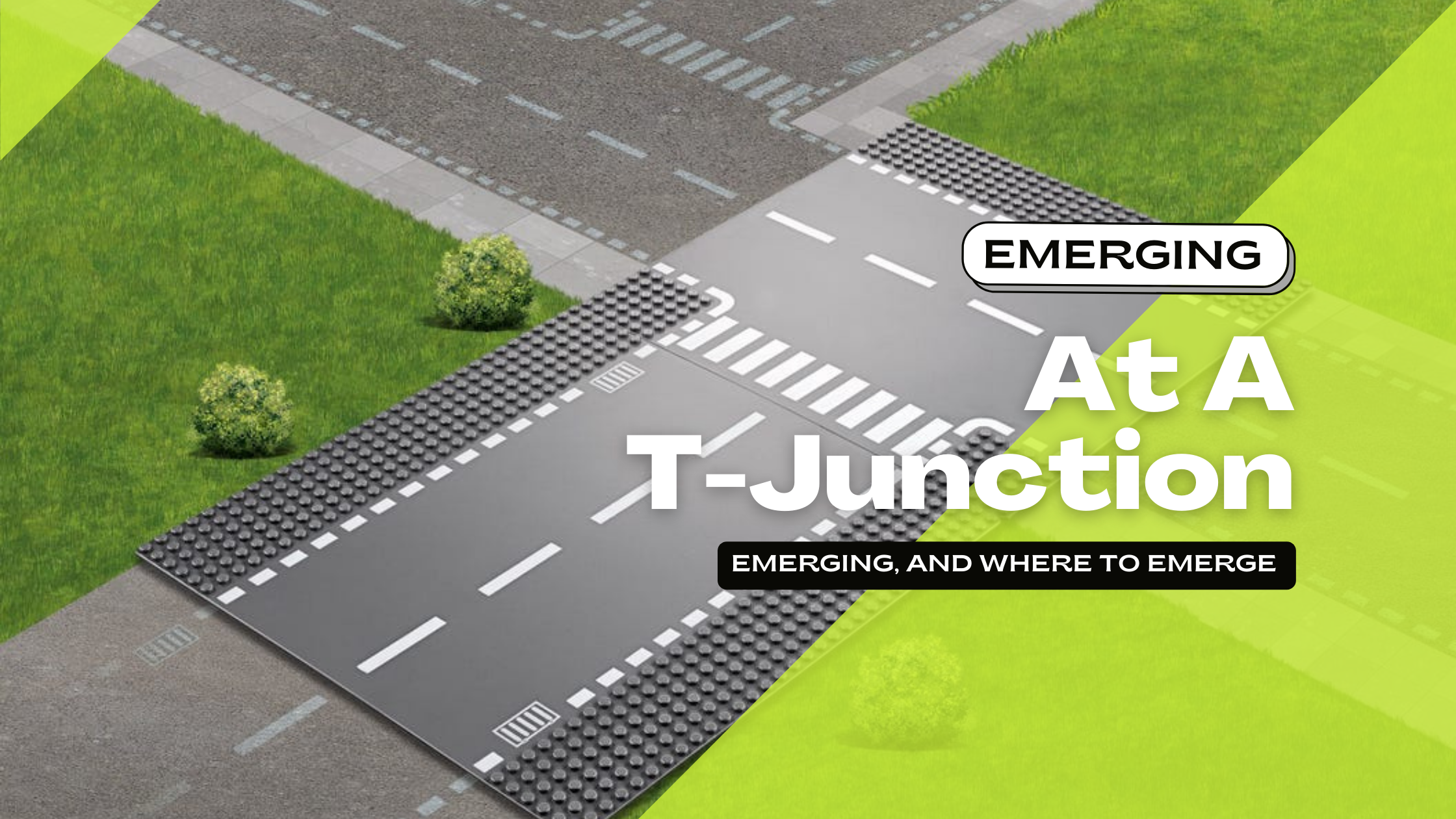As a beginner, learning how to negotiate T-junctions can be a bit of a challenge. Even for many experienced drivers, emerging at a T-junction can be tricky. This is why it is essential to be attentive when learning to do so. Doing that would ensure you get it right first time and ease into it as you become a more experienced driver. This quick guide will give all the information you need to help you when you emerge at a T-junction.
T-junction, emerging, and where to emerge
A T-Junction gets its name because it’s a three-way junction shaped like a “T”. It usually has a minor road leading to a major one, and you can turn either to the right or left.
“Emerging” refers to how a driver safely manoeuvres out of a junction, mainly from a minor to a major road. A driver can emerge at various junctions aside from T-Junctions. These include roundabouts and crossroads.
How to emerge at a T-Junction: what to look for
Patience and a lot of practice, is vital when emerging at a T-Junction. When appearing at a T-Junction, it is essential to identify what type of junction you are approaching – whether it is an open, closed, STOP, or Give-way junction.
- An open junction: In an open junction, you can see a clear way out to the left and right as you approach it because there are little or no obstructions.
- A closed junction: The opposite of an open junction, as your view to the right and left turns may be restricted by buildings or other vehicles.
- STOP junction: A STOP junction comes with the STOP sign, and you need to stop regardless of whether the intersection is clear or accessible.
- Give-way junction: With a give-way junction, you give priority to traffic. It doesn’t necessarily mean STOP; it only means giving way to traffic that has priority. Most give-way junctions have double-broken white lines and usually consists of a minor road joining a major one.
How to emerge at a T-Junction: The method of emerging
Look ahead and assess
When approaching a T-Junction, you first need to look up, assess, and find out what type of junction you are approaching.
Use the MSPSL routine
After determining what type of junction you are approaching, the next thing is to initiate the MSPSL routine. As you approach the T-Junction, look for road signs, cars turning into your road, and give way lines.
- M is for your mirrors. Check your interior and the appropriate door mirror when turning to check if there’s anyone following closely behind you when slowing down. This way, you can avoid any collision.
- S is for signalling. Always ensure that you signal to the other drivers at the right time. That is, do not signal too early or too late. Also, be sure to signal before the road you want to use.
- P is for your position. Always ensure you adjust the position of your vehicle so that you are about one metre from the kerb if turning to the left. If you want to turn to the right, then ensure that you position your car as close to the centre of the road as is safe; only going over the centre lines enough to give clearance to any vehicles on our side of the road.
- S is for speed. It is vital to slow down when emerging at a T-junction. For an open- vision junction – where the minimum checks can be taken on the approach – reduce your driving speed to a jogging pace of about 10mph. For a closed-vision junction – where impediments to vision such as walls, fences etc make it impossible to take the minimum observation on the approach – we need to slow to a walking pace of less than 5mph and be prepared to stop and edge forward using the peep and creep approach in order to improve our vision and emerge safely.
- L is for looking right and left before you pull away. That is the minimum rule of observation here. However, you should make more observations when necessary, depending on how busy the road is, other activities around you, pedestrian movements, etc. You should also lean forward to increase visibility if your view is obstructed. And try to avoid quick head movements when looking left and right, as you may miss out on some details.
Some places have blind T-junctions or bends, and you never emerge onto any major road unless you’re 100% certain it’s safe. If there’s any form of obstruction hindering your visibility in any way, do not proceed until you’re sure.





